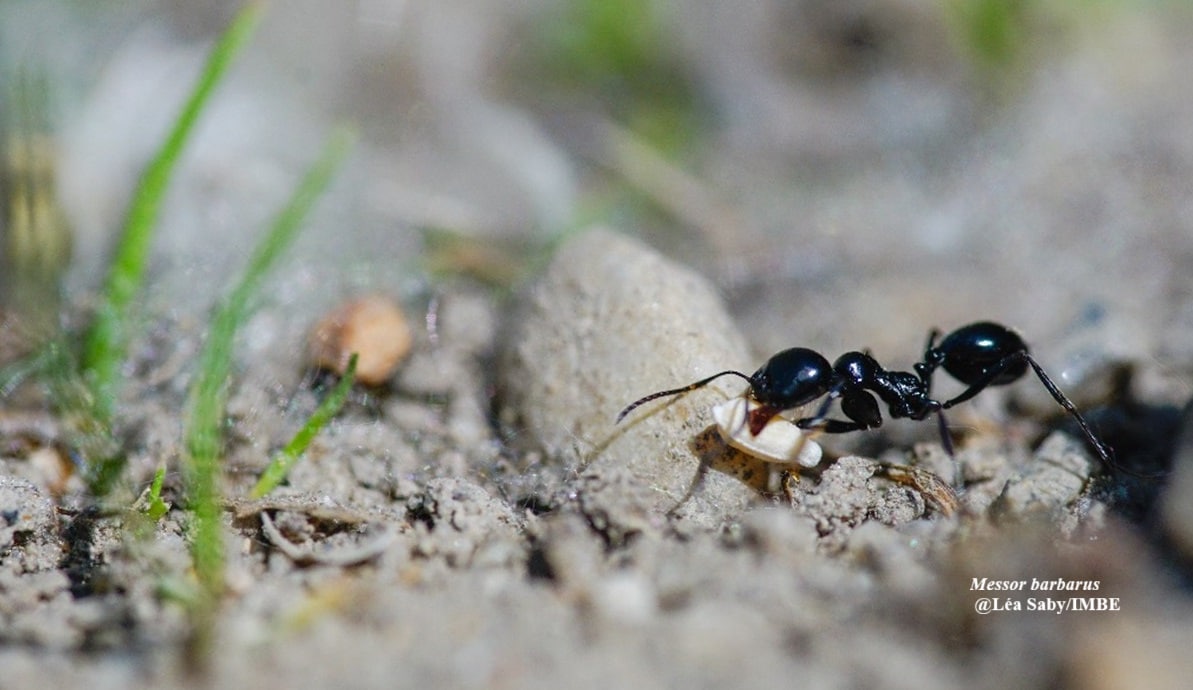Madame Léa Saby , doctoral student at IMBE, Ecology, Ecotoxicology & Chemistry applied to Agroecology and Restoration team, will publicly defend his thesis work on Thursday 27 November 2025, at 2pm in the Amphitheatre of the Avignon IUT. To follow the viva via distance learning.
In front of a jury made up of :
- Estelle Langlois, Professor, ECODIV, University of Rouen, Rapporteur
- Gregory Mahy, Professor, Gembloux Agro-bio Tech, University of Liège, Belgium, rapporteur
- Adeline Bulot, Senior Lecturer, BAGAP, Institut Agro Rennes-Angers, examiner
- Renaud Jaunatre, Inrae Research Fellow, LESSEM, Grenoble, examiner
- Thierry Dutoit, CNRS Research Director, IMBE, thesis supervisor
- Christel Vidaller, Senior Lecturer, IMBE, University of Avignon, thesis co-supervisor
- Pierre Bourget, Director of Société des Carrières de La Ménudelle, Fos-sur-Mer, guest
Summary of work:
The Mediterranean grasslands of the Crau plain are unique semi-natural ecosystems, recognised for their wealth of flora and fauna and their high heritage value. However, these ecosystems are now under threat due to agricultural intensification and industrial development. Restoring their diversity and ecological functions is therefore a major challenge, especially as these ecosystems are strongly constrained by the ecological legacies associated with past land use. This thesis is part of the search for Nature-Based Solutions (NBS) to restore these grasslands, by evaluating different methods ranging from habitat rehabilitation to biodiversity via community ecology and population dynamics approaches.
Firstly (Chapter 1), we assessed the medium-term effects (twenty years after their implementation) of a restoration based on the rehabilitation of the micro-habitat (re-establishment of the pebble cover) and the reintroduction of the dominant species. Brachypodium retusum. While the pebbles encouraged the creation of suitable micro-habitats and supported certain invertebrate communities, the effects of introducing Brachypodus were mixed, with an increase in biomass and stabilisation of the herbaceous cover, but a reduction in plant richness and available forage. These results show that the reintroduction of a dominant species alone is not enough to restore the complexity and diversity of the characteristic communities in the medium term.
Chapters 2 and 3 focused on restoration methods using a pool of species, comparing a commercial seed mixture, hay transfer and an innovative method using ant dumps. Short-term monitoring (6 months) showed that commercial sowing failed in real conditions, dominated by a few poorly adapted species and sometimes with species that were undesirable in relation to the restoration objectives. On the other hand, the transfer of hay and the ant dumps resulted in the establishment of a richer vegetation that was closer to the reference. Extended monitoring (3 years) confirmed the effectiveness of the hay, which favoured floristic convergence towards the reference communities, while the ant dumps proved complementary, enriching the communities with species specialising in biological crusts, a facies typical of the sub-steppe grasslands of the Crau.
Finally, Chapter 4 dealt with the targeted restoration of dominant species (Brachypodium retusum and Thymus vulgaris) that were absent despite sowing, by testing different reintroduction methods. The results showed that sowing was not very effective, whereas transplanting young plants significantly increased survival and establishment rates. However, performance depended on the origin of the material (local vs. micro-local) and the type of soil, with soils from old orchards appearing to be particularly unfavourable.
Overall, this thesis highlights the importance of ecological legacies in restoration trajectories. Agricultural soils that are highly enriched in nutrients appear to be the most difficult to restore, whereas steppe soils, even when reworked and stored for several years, retain more favourable properties. It also highlights the relevance of combined approaches: transfer of hay to rapidly establish a matrix, ant dumps to enrich with specialised species, and targeted introduction of dominant species by transplants.


